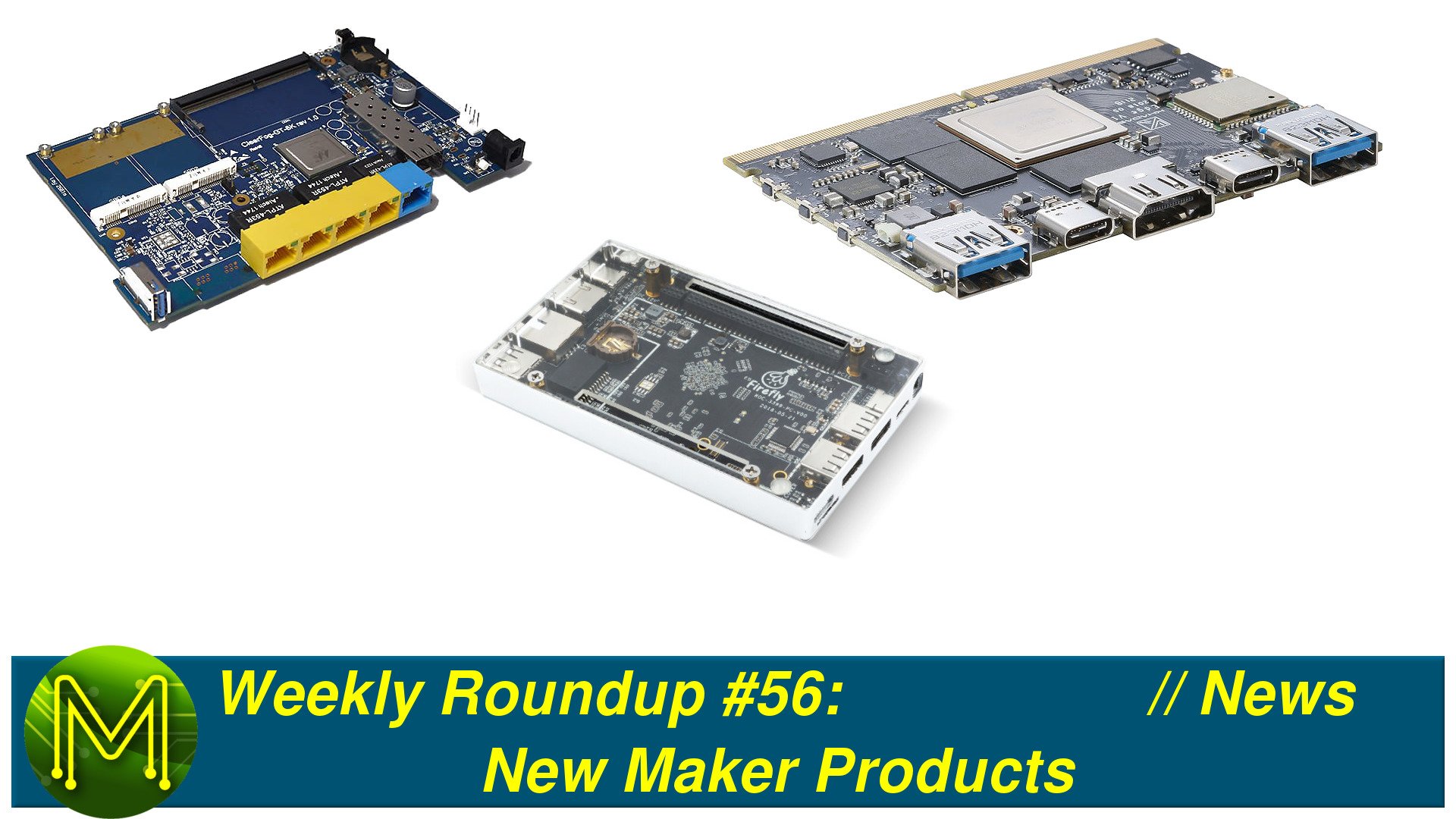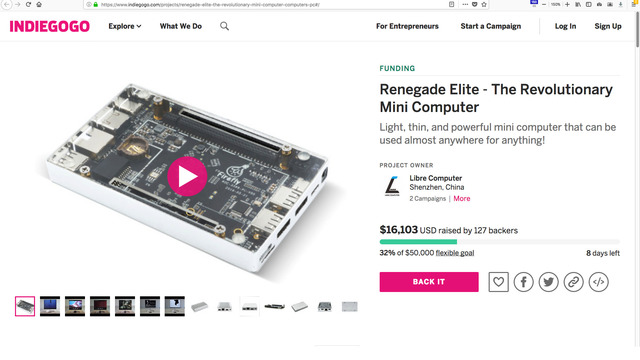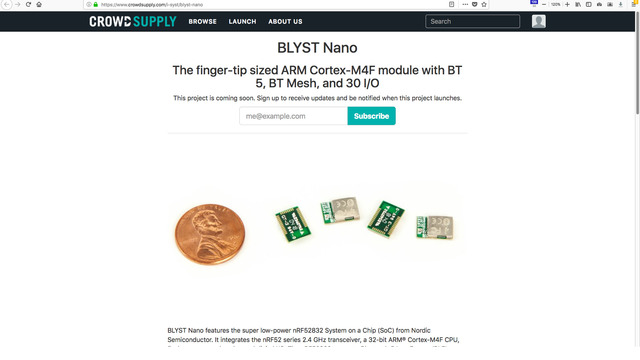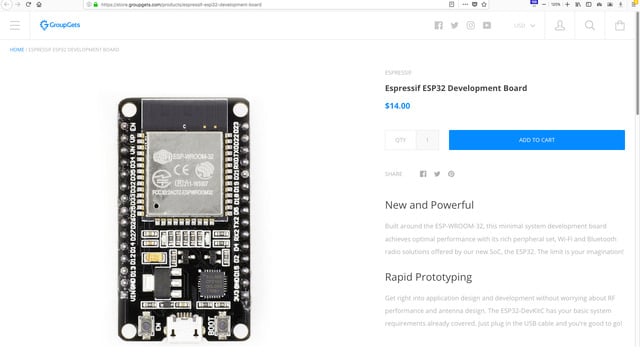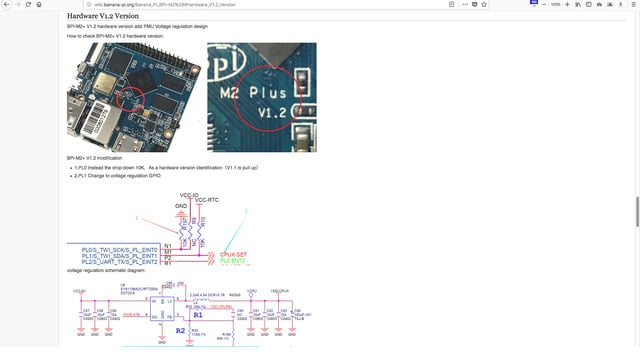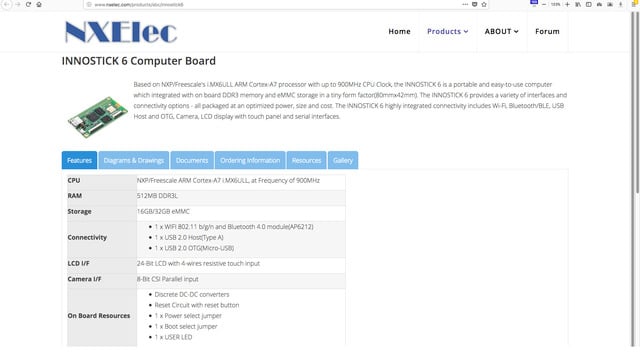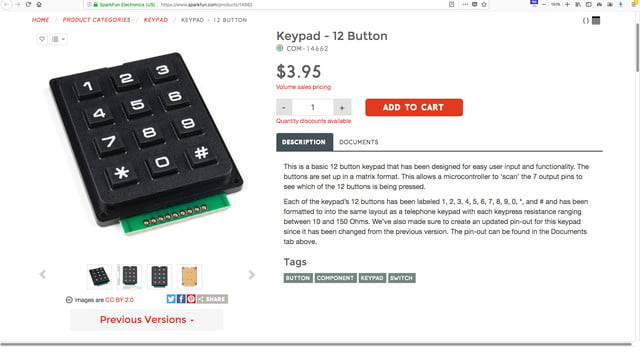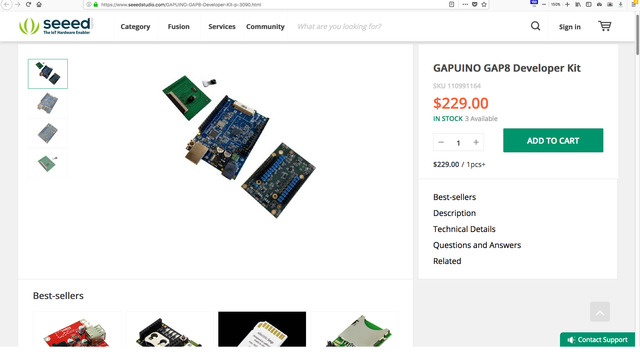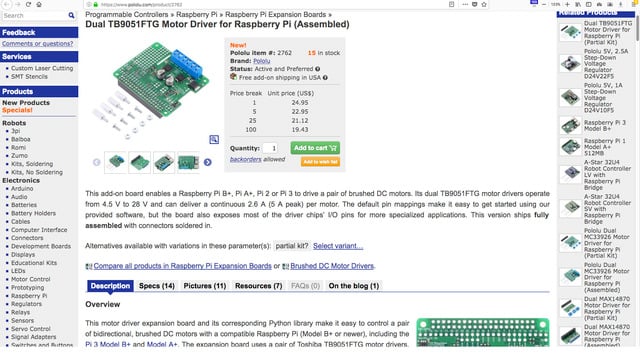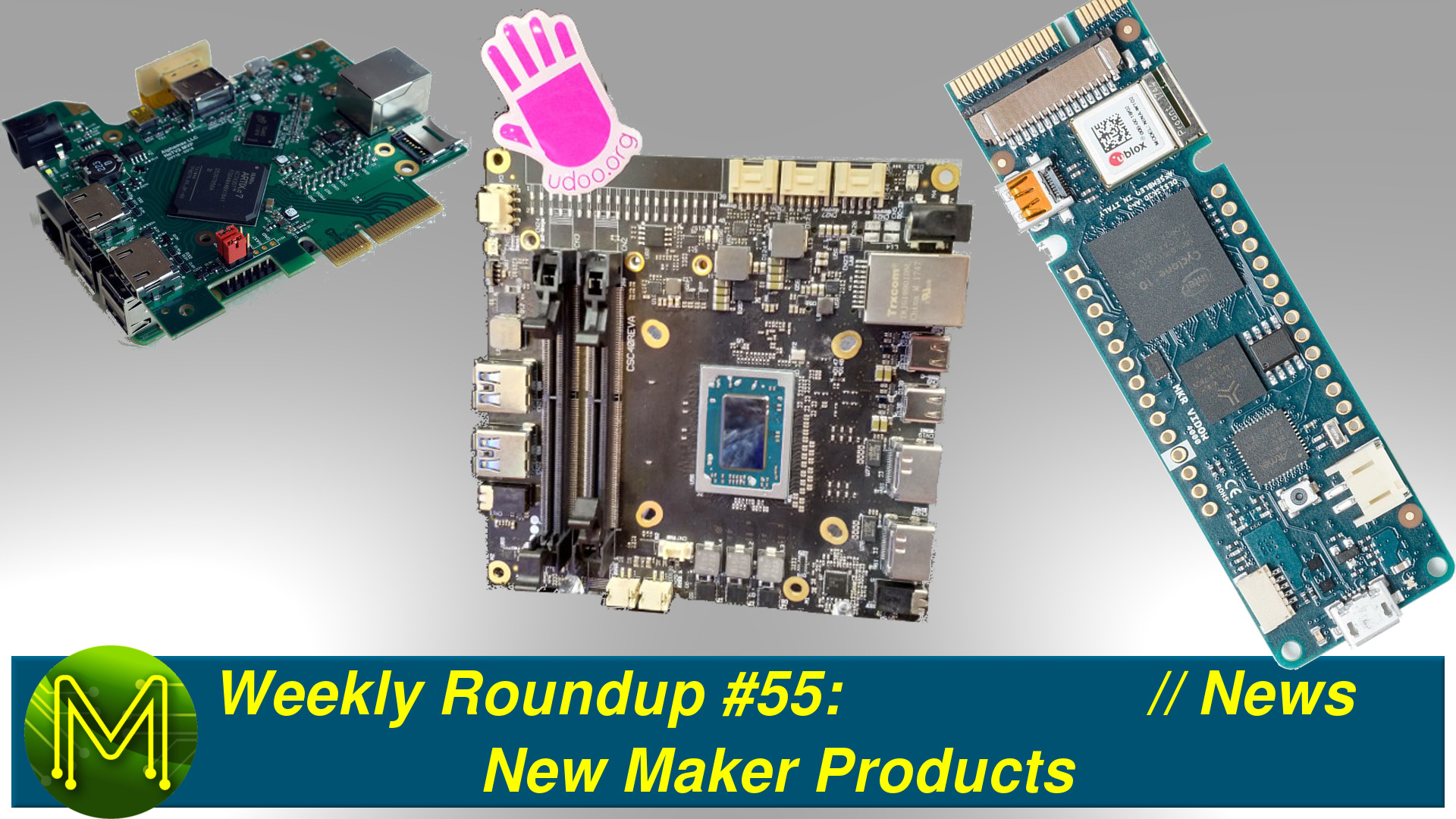Weekly Roundup #56: New Maker Products // News
This week’s roundup of new maker products looks at a bunch of new SBCs: Renegade Elite, ClearFog GT 8K, Banana Pi BPI-P2 Zero, BPI-R64, BPI-M2+ V1.2 & Khadas Edge. As well as the Google Edge TPU, and a bunch of cool things from Tindie.
Crowd Funding
KickStarter
HCC MOD
Over at Kickstarter you can pick up a tiny castellated module with a SAMD21 onboard. This is actually a pretty good idea as it handles all the support components for you such as reset button, 3.3v regulator, LEDs, crystal and filter caps. All you have to do is solder up the 22 by 18mm board and you’re home and hosed. The creator has also come out with an Arduino compatible PCB that you can solder it to.CortexProg
This campaign is yet another debugger for a Cortex-M MCU. However this one claims to not only provide programming and debugging capabilities, but provide ZeroWireTrace, full GDB support, gang-loading for mini-production runs, multi-core support, lua based scripting and support for new MCUs can be provided without firmware updates. Nice! Another one I think I’ll back.DeDe
Here’s another Arduino shield that seems to have the lot. It provides a small breadboard area as well as dual headers on every pin so you can wire up your circuit while keeping an oscilloscope attached. Every GPIO also has an LED indicating the current state with very minimal pullups to avoid loading and can indicate pulses down to 1mS.Raspberry Pi MEGA-IO
The MEGA-IO is a hat that provides a bunch of expansion options for your Pi. There’s opto-isolated digital inputs and outputs, 0 to 10v analog inputs and outputs, open-drain outputs, RS485, CAN, 1 wire, RTC and 240v/10A relays. Basically it has the lot.Fumetractor
OK, I originally thought that was just yet another fume extractor thingy, but heck, this one has a PCB driving it. It no only provides PWM control over a small extraction fan, but auto-shutdown and charging of an 18650 battery. You can charge via USB or also by a Qi pad. Nice.IndieGoGo
Over at IndieGoGo there’s actually something interesting going on.
Renegade Elite
The Libre Computer guys have released another SBC called the Renegade Elite. This one runs the hexa-core Rockchip RK3399 SoC with 4G DDR4 RAM, eMMC socket, SD, SPI flash, GbE supporting PoE, (which is becoming become absolutely essential these days), USB Type C, (supporting both power and DisplayPort), HDMI, eDP, MIPI-CSI, RTC, IR and two 60 pin headers. One which supports PCIe and the other for low speed GPIOs. At US$99 it’s pretty cool for the base SBC.Crowd Supply
Over at CrowdSupply in pre-launch …
Pixblasters Video LED Controller
… there’s the PixBlaster. This is an FPGA based RGB LED controller that is capable of controlling up to 16,384 WS2812 based RGB LEDs at 60 FPS. Wow. Not only that, but you can daisy chain multiple controllers which, (they claim), can control up to hundreds of thousands of LEDs. Supports most digital signage software and also plain HDMI input.MOMONGA
This is a pretty cool tiny spider robot. Made from 3D printed parts, SG90 servos and an ATmega328 as the brains. Each of the legs also has an ATtiny84 controlling the servo, an an optical sensor and piezo speaker, so I’m gathering it makes it easily extendable. It also has LiPo charging supporting a 250mAh battery.BLYST Nano
Another tiny board. The Blyst Nano runs an nRF52832 MCU and breaks out 30 GPIOs on a tiny 10 by 7mm board.GroupGets
Over at Groupgets …
Espressif ESP32 Development Board
Espressif have their ESP32 dev board up pretty cheaply. Only US$14. Nice.ESP8266 Power Switch
And a contender to the Sonoff devices is this ESP8266 based power switch, but with a well needed glass fuse for protection.Elektor Uno R4
You can also pick up the Elektor Uno R4 which runs the upgraded ATmega328PB, This gives you additional UARTs, SPI, I2C, PWM, timers and OCM.Honorable mentions
ClearFog GT 8K
The SolidRun guys are back with another SBC called the ClearFog GT 8K. This is a networking board running a quad-core Marvell Armada 8040 Cortex-A72 SoC with 16G DDR4 RAM, 5 GbE as well as a 10GbE uplink SFP, three miniPCIe slots, USB 3.0 and a bunch of GPIOs. You’d be expecting to pay a bucket load for this sort of thing, but the 8GB eMMC model comes in at US$209 which is pretty decent, but you can also get the 128GB eMMC model for US$612. Although that’s not really needed as you can pick up SSDs cheaper. I’ll pick up one of these and do a review on it.Banana Pi BPI-P2 Zero
The Banana guys have planned to release a new SBC called the Banana Pi P2 Zero. This runs an Allwinner H2+ with 512M DDR3 RAM, 8GB eMMC, SD slot, 100MbE, WiFi, Bluetooth, HDMI and a who knows if it’s a Pi compatible 40 pin GPIO. This board can be powered not only from a 5v/2A micro USB connector, but also over PoE. Nice!Banana Pi BPI-R64 Router
Another SBC that’s in the planning stage is the Banana Pi R64, which is an upgrade from the previous R2. It runs the dual-core MediaTek MT7622 Cortex-A53 with 1G DDR3 RAM, SD, SATA, 5 GbE, WiFi, Bluetooth and also takes an optional 4G mini PCIe module. Has the handy dandy 40 pin GPIO header which may or may not be a Pi header and power is either from a 12v/2A DC jack or PoE.Banana Pi BPI-M2+ V1.2
And they also have a small upgrade on their Banana Pi M2+ which fixes their questionable power management design of the original M2. This now sports a PMIC, which is very much required for proper management of power on a SoC, but also gives people the opportunity to overclock or underclock the board. Finally! So if you’re thinking of getting an M2, make sure it’s Rev 1.2 of the M2+.Pine64 SATA enclosure
Not be left out, the Pine64 guys have made available an enclosure that houses a RockPro64 and compatible PCIe SATA card giving you a pretty decent NAS setup. They provide not only the case, but power supply, heatsink, fan and SATA cables but you’ll have to provide your own SATA card.Khadas Edge
The Khadas guys are back again with a new SBC called the Khadas Edge. Well, it’s actually a hybrid SBC and SOM as it not only has a SOM edge connector, but breaks out USB and HDMI ports on the other edge. The board runs the hexa-core Rockchip RK3399 with either 2 or 4G DDR4 RAM, 16, 32 or 64G eMMC, GbE, WiFi, Bluetooth, USB Type C, HDMI, PWM controlled cooling fan header and also an STM8 MCU for power and boot management. Power is from either 5 to 20v over USB Type C, SOM header, or solderable pads.Google Edge TPU
Google is upping the ante on hardware with a new ASIC called the Google Edge TPU. It’s designed for machine learning with some of the processing happening onboard, or you can connect to Google Cloud to greatly expand it’s capabilities. SkyNet here we come!If you want to get into it, they’re also releasing the AIY Edge TPU dev board. This comes as a SOM and baseboard setup, with the SOM running a quad-core NXP 8M Cortex-A53 SoC with 1G DDR4 RAM, 8G eMMC, SD, TPU co-processor, WiFi, Bluetooth, GbE, HDMI, USB Type C, mic and speaker terminal blocks and a probably, maybe Pi compatible 40 pin GPIO header. Even though it’s exactly the same footprint as the Pi, I doubt it’d fit into any Pi cases with those different connectors onboard.

